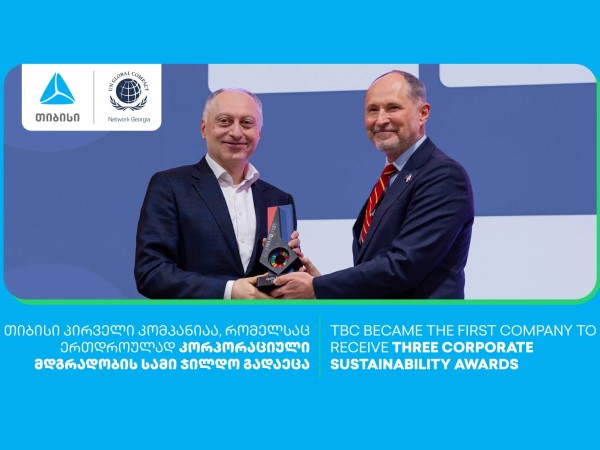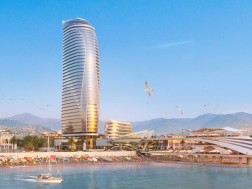Tbilisi (GBC) - The demand for warehouses and logistics-related services has surged in recent years due to increased transit flows and local demand, resulting in a rise in construction permits issued.
The warehouse real estate market in Georgia is largely unorganized and fragmented, dominated by numerous small-scale operators and lacking structured service providers and comprehensive third-party logistics (3PL) options. The estimated gross leasable area (GLA) of warehouse facilities is approximately 2.2 million SQM, with 33% available for lease and 67% owner-occupied.
The tenant mix at warehouses includes diverse sectors such as fast-moving consumer goods (FMCG), apparel, electronics, pharmaceuticals, and beauty industries.
Among the leasable warehouses, 68% are concentrated in Tbilisi, followed by Kutaisi (17%), Batumi (5%), and Poti (5%). The GLA of warehouses in Tbilisi is 393,369 SQM, primarily concentrated in Samgori (45%), Nadzaladevi (23%), and Isani (11%). The occupancy rate for Tbilisi warehouses is about 77%, potentially higher due to service contracts. Average rents range from $3 to $5 per SQM, excluding VAT and service fees, with Class A facilities seeing rates rise to $7 per SQM.
In Kutaisi, the warehouse market features mainly traditional facilities, focusing on manufacturing, assembly, and storage, supported by the Kutaisi Free Industrial Zone (FIZ). Average rents here are between $2 and $2.5 per SQM, with an occupancy rate of 36%, likely understated due to service contracts.
Poti serves as a vital logistics and industrial hub along the Black Sea coast, featuring a Free Industrial Zone (FIZ) and numerous terminals and transit companies that prioritize logistics services and ensure a fast cargo turnover rate over long-term lease agreements. Therefore, the average occupancy rate in Poti is around 21%, although actual utilization may be higher due to significant cargo volumes.
Batumi accounts for 5% of the leasable warehouse market, with average rents ranging from $3 to $6 per SQM and an occupancy rate of 39%, which may also be underestimated. Rustavi’s warehouse market is characterized by small, unorganized players focused on car parking rather than dedicated logistics facilities, indicating opportunities for future growth in this underdeveloped area.
In 2023, the estimated demand for warehousing capacity in terms of volume reached 38.6 million cubic meters. In 2024, improvements in trade and transit volumes led to an 11.6% increase in the need for warehousing space. Looking ahead, demand for warehousing capacity is projected to grow at a compound annual growth rate (CAGR) of 9% between 2025 and 2028, indicating a sustained upward trend. It is important to note that significant external uncertainties and global developments may result in global supply chain realignments and a redirection of Asia–Europe trade flows, thereby reshaping regional and local logistics dynamics.






















